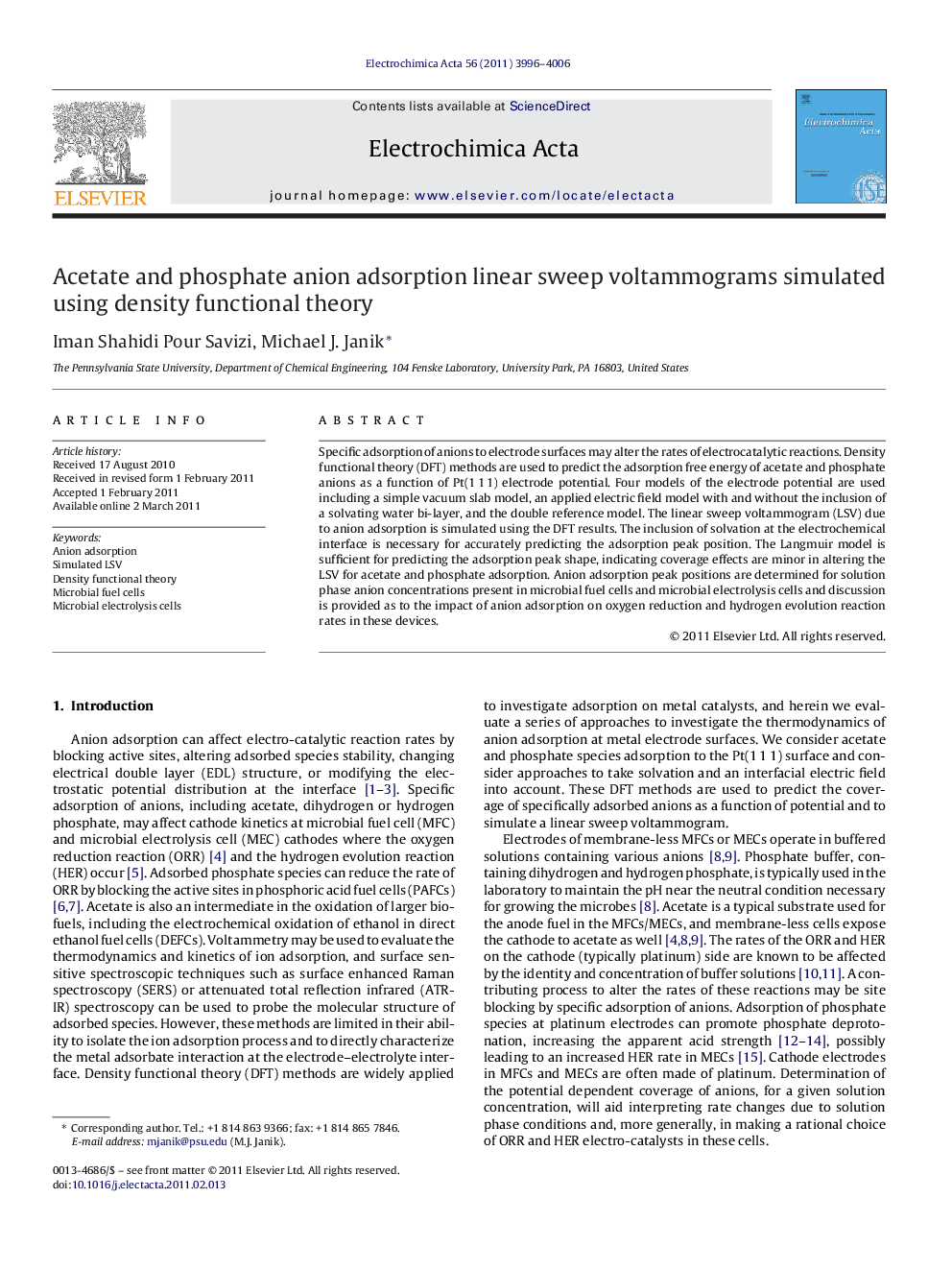| Article ID | Journal | Published Year | Pages | File Type |
|---|---|---|---|---|
| 190255 | Electrochimica Acta | 2011 | 11 Pages |
Specific adsorption of anions to electrode surfaces may alter the rates of electrocatalytic reactions. Density functional theory (DFT) methods are used to predict the adsorption free energy of acetate and phosphate anions as a function of Pt(1 1 1) electrode potential. Four models of the electrode potential are used including a simple vacuum slab model, an applied electric field model with and without the inclusion of a solvating water bi-layer, and the double reference model. The linear sweep voltammogram (LSV) due to anion adsorption is simulated using the DFT results. The inclusion of solvation at the electrochemical interface is necessary for accurately predicting the adsorption peak position. The Langmuir model is sufficient for predicting the adsorption peak shape, indicating coverage effects are minor in altering the LSV for acetate and phosphate adsorption. Anion adsorption peak positions are determined for solution phase anion concentrations present in microbial fuel cells and microbial electrolysis cells and discussion is provided as to the impact of anion adsorption on oxygen reduction and hydrogen evolution reaction rates in these devices.
Research highlights► The linear sweep voltammogram (LSV) due to acetate and phosphate anion adsorption is simulated using the DFT results. ► The inclusion of solvation at the electrochemical interface is necessary for accurately predicting the adsorption peak position. ► The Langmuir model is sufficient for predicting the adsorption peak shape, indicating coverage effects are minor in altering the LSV for acetate and phosphate adsorption.
